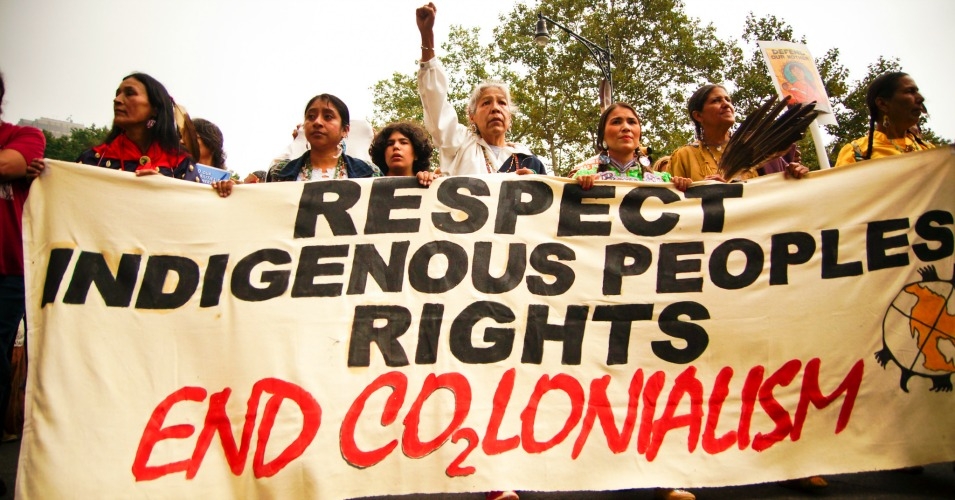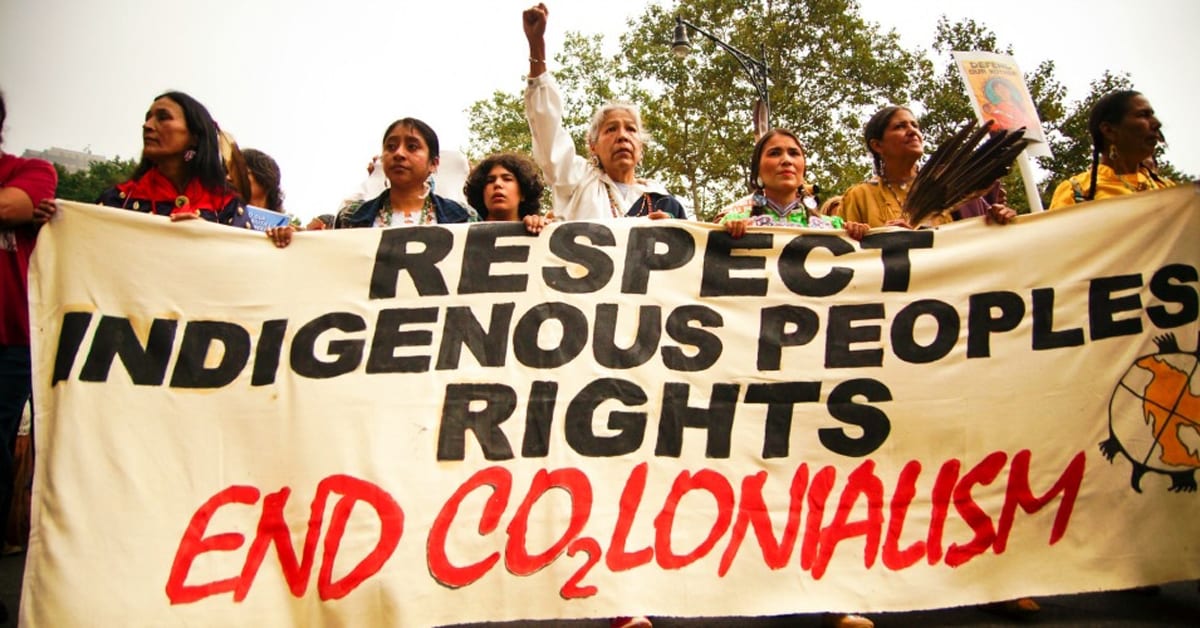
Three hundred seventy million.
If these were digits in one’s bank account, many would be interested. If these were followers on social media, the owner would probably be in the world record. If these were views, they surely are earning a lot. Indeed, we make a fuss with just these few words. In reality though, these numbers are the most neglected population. They are the IPs.
IPs, commonly known as Indigenous People, comprises about 5% of the world’s population (United Nations, 2019). Combined from all over the world, their population is relatively larger than that in the United States, which only totals to about 330 million (4.27% of the world’s population). Aside from the numbers, Indigenous People are also referred to as the first people, aboriginal, ethnic groups, or natives. Whatever they are called, they are humans who have territories, cultures and rights.
In spite of that, many people, in a way or the other, regard IPs as insignificant people in the society. Some see them as hindrances to prosperity and industrialization. Others view them to be old-fashioned and hamper globalization of all.
While these are just purely misunderstanding, IPs wanted their voices to be heard in a subtle manner. They speak for their rights, for their valued culture, and most of all, for their valued lands.
Indigenous People’s Role in Protecting the Environment
Before any environmental organizations were born, Indigenous People were already thriving to live in harmony with the environment. They secure the primary role of protecting nature from continual degradation. Although occupying only 22% of the world’s surface, IPs were able to maintain biodiversity to about 80% of the planet.
How did this small group of people create such a gigantic impact? The secrets are in their ways, beliefs and cultures. Indigenous people uses traditional ways of agricultural practices, thus, make a more resilient approach to climate change. They also see nature as a connected entity to their soul, so they make all means to conserve and restore natural resources. In addition, they consume food that are not the staple for the rest of the world. Through this, they help expand the already narrow food base of humanity. Most importantly, their lifestyle are respectful of people and of natural resources. Thus, they are able to conserve water, prevent land degradation, and reduce disaster risks.
They are, in other words, the guardians of Mother Earth. They succeed in where the larger population failed.
Struggles of Indigenous People against Exploitation and Human Rights Abuses
Despite the crucial role they portray in society, indigenous people are not treated as they should be. All over the world, there are reports of abuses, discrimination and exploitation. Their territories are robbed. Even their rights and freedom are taken away from them. Worst, their identity and culture is torn away from them. What’s more alarming is that most of these happens and are not known to the public or authorities. Worse than that, it is evident but people have turned blind eye.
Amazon Natives’ Plight
The Amazon Rainforest is the living paradise of Earth. It is not only home to thousands of species. But it also performs as the air filter of the planet. With its lush tress and rainforests, the Earth had survived pollutions from industries all over the world.
In this pristine forest also live the Amazon natives. They serve as caretakers of the called “respiratory system” of Mother Nature. However, the moment they are known to public is the instant they started thriving not only for their territory, but also for their rights. In 2012, Amazon groups raised their concerns over logging companies who exploit their forests. That same problem was still a concern today.
On a separate scenario, the Waorani people, the Amazon natives in Pastaza, Equador, felt the need to bring to court their battle towards protecting their rainforest from oil drilling. That incident in August 2019 was a global celebration because natives won the legal case. Unfortunately, celebration was cut short due to the wildfire that instantly paralyzed the Amazon.
Even now, Amazonians see the future obliquely. What’s clear is that the plight they are raising is not isolated for publicity, or for winning legal matters. Amazonians seek true peace, and true respect over their rights and identity. Moreover, their cries are more for the territory which came to be their sanctuary.
Native American’s Fight to Reclaim Their Lost Lands and Preserve Waters
Brutal and callous. This is by far, the most appropriate words to describe the history that hunts Native Americans, also called Indians. As the first settlers resiliently dwell on their lands in eastern United States, Indians were forced to vacate their ancestral homelands. This happened between the early 17th century and early 20th century. The reason? Not coercion, but power.
Due to the growing power of white Americans, they have established legal institutions and rules to govern the land. Of course, it should primarily benefit them. They see natives as both competition and subordinates to which laws are forcefully imposed. There are even bloodshed and terror to make their point to Indians.
Even these days, the struggles of Native Americans continue. Though already bestowed with a place to settle, the land is merely a dust below their feet. They cannot even call it home, nor make connections with the Earth through it. This is because the American government prevents them from owning the land.
Land means power to majority of Americans. By giving away lands to Natives, even though they are rightful of it, they feel like they are also giving away a portion of their authority.
European Natives
Of all the aboriginal groups, European Natives are the least known. Due to this fact, it would not be surprising to known that what they are anxious of is recognition.
Most of Europe’s indigenous people are in the cold Arctic region. Most of them are from the Saami people from Sweden, and the Inuits (Eskimos) from Greenland. While there are no reliable figure to represent their population, they also have a number of environmental concerns.
First is their battle towards climate change. Most of the natives depend on their natural environment, may it be in culture or livelihood. A change in the environment, may mean a shift in their lifestyle. Especially that the Arctic region suffers a lot due to global warming, activities, including which keeps them alive, is disturbed.
Second, their language is endangered. In 2019, the United Nations reported that “40% of the estimated 6,700 spoken languages are in danger of disappearing and majority were indigenous.” This includes the native languages of Europe’s indigenous people. Knowing that languages play significant role in cultural preservation, the natives, even the world, is alarmed.
Lastly, they are anxious of their land and resources. Like other IPs around the world, natives in Europe also fear depletion of natural resources and exploitation of lands. The rise in industrialization is no help. It even magnifies the fear the natives are facing. Thus, they call for strengthening indigenous people’s rights.
South East Asian Indigenous People’s Struggles
Asia is among the continents with the most number of indigenous groups. Two thirds of the indigenous people live in this continent. In Southeast Asia alone, there are approximately 1.2 million natives living all over the Philippines, Indonesia, Malaysia, Myanmar, Thailand, Laos, Cambodia, and Vietnam. On a sad note, these indigenous people face life-threatening challenges—ethnocide being the worst.
For instance in 2015, Lumad attacks surfaced Philippine headlines. A number of threats to the Lumad communities in Mindanao alarmed the nation. They were forced to leave their land, and were even harassed and terrorized. Their towns were occupied by a paramilitary force. Theories on killings include tribal wars of Manobo and Lumad. Some also think that the National People’s Army (rebel group) are behind it. While most are not convinced by these claims, a mechanism was created to investigate create internal actions. Still, many Lumads are forced to leave home and was deprived by educational rights due to closing of 55 schools, allegedly academies for rebels.
What Can We Do to Help Fight for Indigenous People and Mother Nature?
Without doubt, indigenous people are important pieces of humanity. They do not just maintain biodiversity in ecosystem, they too, take part, even lead, in many societal concerns, primarily related to the environment. Their plight is not a lone fight. We must support them and take part in their wailings.
1. Boycott Industries That Feed From Exploitation and Harming Indigenous Peoples
Those with power abuse the indigenous people the most. This is seen in a lot of Asian countries where natives are marginalized and subordinated economically, politically, and culturally. In Africa and the United States, slavery of natives are rampant. They get the most of the lands’ gist out from these people, with meager money to compensate their lifelong struggles.
As long as these industries are entertained in the market, exploitation to indigenous people will continue. Their dignity will further erode, let along with their homes.
2. Donate to Charities
Our social opinions means a lot. But we can further extend our advocacies through charity donations. This does not mean thriving to be rich first to help. Nowadays, a lot of organizations and social entrepreneurs create platforms to link indigenous people to the rest of the world. Identify them, learn about them. Through that, you show we support. We make them feel we care.
3. Conserve the Environment
Indigenous people may be diverse in culture, but they are one in protecting the environment. They respect their ancestral homelands so much, that they do what they must to safeguard and restore them. By being one with their aims, you can show that you value their ways and what they believe.
Natives are also the best people to represent zero waste lifestyle. They only get what they need and are contented with. They manage their resources well, thus, producing only minimal amount of ways. If we try this lifestyle shift, we value IPs.
Conclusion
Three hundred seventy million. That five percent of the world’s population just made us see the prowess of environmental participation. Imagine being one with their goals, the world would be a better, clean place to live.




Thank you for this. This is very important to let people know what’s going on around the world.